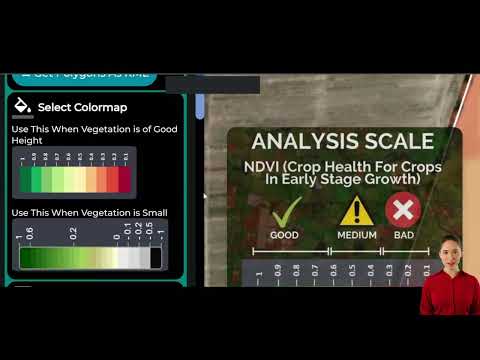Unlocking EPA Funding: Enhancing Pesticide Safety Education Programs for Certified Applicators
“The EPA’s Pesticide Safety Education Program offers a base funding of $17,025 per eligible Land Grant University.”
In the ever-evolving landscape of agricultural safety and education, we are excited to announce a groundbreaking opportunity for Land Grant Universities across the nation. The Environmental Protection Agency (EPA) has unveiled a significant funding initiative aimed at bolstering Pesticide Safety Education Programs (PSEPs) for certified applicators. This cooperative agreement represents a pivotal moment in our collective efforts to enhance pesticide safety management and training, ensuring a safer and more efficient agricultural sector.
The Essence of the EPA Funding Opportunity
At its core, this initiative is designed to address the critical need for comprehensive and up-to-date pesticide safety education. With the agricultural industry constantly adapting to new technologies and practices, it’s imperative that our educational programs keep pace. The EPA’s funding opportunity not only provides financial support but also encourages innovation and collaboration in developing cutting-edge training methodologies.
Let’s delve into the key aspects of this funding opportunity:
- Base Funding: Each eligible Land Grant University stands to receive a substantial base funding amount of $17,025.
- Additional Funds: Beyond the base amount, additional funds will be allocated based on the number of certified applicators in each state.
- Educational Deliverables: Participating institutions are required to share their educational materials, fostering a collaborative environment for knowledge dissemination.
- Training Webinars: Applicants must attend training webinars, ensuring they are well-equipped to utilize the funds effectively.
This comprehensive approach not only strengthens local PSEPs but also contributes significantly to improving national pesticide safety standards. As we navigate this exciting opportunity, it’s crucial to understand its potential impact on agricultural practices and safety protocols.

The Significance of Pesticide Safety Education Programs
Pesticide Safety Education Programs play a crucial role in modern agriculture. They serve as the cornerstone for ensuring that certified applicators are well-versed in the latest safety protocols, application techniques, and environmental considerations. The importance of these programs cannot be overstated, especially considering the evolving nature of agricultural chemicals and application technologies.
Key benefits of robust PSEPs include:
- Reduced risk of environmental contamination
- Enhanced protection for agricultural workers and surrounding communities
- Improved efficiency in pesticide application, leading to cost savings
- Better compliance with state and federal regulations
- Advancement of sustainable agricultural practices
By investing in these programs, the EPA is taking a proactive stance in safeguarding both human health and the environment. This funding opportunity represents a significant step forward in our collective efforts to promote responsible pesticide use across the agricultural sector.
Breaking Down the Funding Structure
To provide a clear overview of the EPA funding opportunity, we’ve compiled a comprehensive table that breaks down the key components:
| Funding Component | Amount/Details | Requirements |
|---|---|---|
| Base Funding | $17,025 | Eligible Land Grant University status |
| Additional Funding | Variable based on state applicator numbers | Detailed report on state applicator statistics |
| Total Potential Funding | Base + Variable Amount | Successful application and compliance with program guidelines |
| Eligibility Criteria | Land Grant University status | Proof of eligibility and existing PSEP infrastructure |
| Application Process | Online submission through EPA portal | Complete application form and supporting documents |
| Deliverables | Educational materials, progress reports | Regular submission of materials and attendance at training webinars |
This structured approach to funding ensures that resources are allocated efficiently and that participating institutions are fully equipped to enhance their Pesticide Safety Education Programs.
Leveraging Technology in Pesticide Safety Education
In the digital age, the integration of technology into agricultural education is not just beneficial—it’s essential. The EPA funding opportunity encourages the development and utilization of online courses and digital resources, recognizing the power of technology in reaching a wider audience and providing more engaging learning experiences.
Some innovative approaches that can be developed or enhanced with this funding include:
- Interactive online training modules
- Virtual reality simulations for pesticide application scenarios
- Mobile apps for real-time access to safety guidelines and regulations
- Webinars and video conferences for remote learning opportunities
- Digital assessment tools to track and certify applicator knowledge
By embracing these technological advancements, PSEPs can offer more flexible, accessible, and comprehensive training to certified applicators across the country.
In line with these technological advancements, Farmonaut’s web application offers cutting-edge solutions for precision agriculture. While not directly related to pesticide safety education, Farmonaut’s tools can complement PSEPs by providing valuable insights into crop health and management practices.
The Impact on Agricultural Extension Services
Agricultural extension services stand to benefit significantly from this funding opportunity. These services play a crucial role in bridging the gap between research institutions and farmers, disseminating valuable information and best practices. With enhanced funding for PSEPs, extension services can:
- Expand their reach to more farmers and agricultural workers
- Develop more comprehensive training programs
- Invest in advanced demonstration equipment and materials
- Collaborate more effectively with research institutions
- Provide more personalized support to certified applicators
This strengthening of extension services will have a ripple effect throughout the agricultural community, leading to improved practices and safer pesticide use across the board.
“This national initiative aims to enhance pesticide safety training for certified applicators across all 50 states.”
Enhancing Collaboration and Knowledge Sharing
One of the most exciting aspects of this EPA funding opportunity is its emphasis on collaboration and knowledge sharing. By requiring participating institutions to share their educational deliverables, the program fosters a nationwide network of expertise in pesticide safety education. This collaborative approach offers several advantages:
- Cross-pollination of ideas and best practices
- Standardization of high-quality educational materials
- Reduction in duplicate efforts, leading to more efficient use of resources
- Creation of a comprehensive national database of pesticide safety education resources
- Opportunities for inter-institutional research and development projects
This collaborative spirit aligns perfectly with the ethos of Land Grant Universities, which have long been at the forefront of agricultural research and education.

The Role of Technology in Modern Agriculture
As we discuss the advancement of pesticide safety education, it’s important to recognize the broader role of technology in modern agriculture. Innovative tools and platforms are revolutionizing how farmers manage their crops and resources. While our focus is on the EPA funding for PSEPs, it’s worth noting how complementary technologies can enhance overall agricultural practices.
For instance, Farmonaut’s API offers advanced satellite-based farm management solutions. These tools, while not directly part of pesticide safety education, can provide valuable data on crop health and field conditions, which can inform more precise and safer pesticide application practices.
For those interested in exploring these complementary technologies, Farmonaut’s API Developer Docs provide comprehensive information on integrating advanced agricultural data into various systems and applications.
The Application Process: A Step-by-Step Guide
Navigating the application process for this EPA funding opportunity is crucial for eligible institutions. Here’s a step-by-step guide to help you through the process:
- Confirm Eligibility: Ensure your institution meets the Land Grant University criteria.
- Gather Required Information: Compile data on your state’s certified applicators and existing PSEP infrastructure.
- Review Application Guidelines: Carefully read through all EPA-provided documentation.
- Prepare Your Proposal: Outline how you plan to use the funds to enhance your PSEP.
- Submit Application: Use the designated EPA online portal to submit your application.
- Attend Information Sessions: Participate in any EPA-hosted webinars or Q&A sessions.
- Follow Up: Be prepared to provide additional information if requested.
- Await Decision: The EPA will review applications and notify successful applicants.
Remember, the application process is designed to be streamlined, with support available for navigating the system. Don’t hesitate to reach out to the EPA’s designated contact points if you need clarification or assistance.
Leveraging Mobile Technology in Agricultural Education
In today’s digital age, mobile technology plays a crucial role in disseminating information and providing on-the-go resources for agricultural professionals. While our focus remains on the EPA funding for PSEPs, it’s worth noting how mobile applications can complement these educational efforts.
For those interested in exploring cutting-edge agricultural technology,  offers advanced features for crop monitoring and management on Android devices.
offers advanced features for crop monitoring and management on Android devices.
Similarly, for iOS users,  provides access to Farmonaut’s suite of agricultural tools.
provides access to Farmonaut’s suite of agricultural tools.
While these apps are not directly related to pesticide safety education, they represent the kind of mobile technology that can enhance overall agricultural practices and complement the objectives of PSEPs.
The Future of Pesticide Safety Education
As we look to the future, it’s clear that pesticide safety education will continue to evolve, driven by technological advancements and changing agricultural practices. The EPA funding opportunity is just the beginning of what we envision as a new era in agricultural safety and education.
Some trends we anticipate in the future of PSEPs include:
- Integration of artificial intelligence for personalized learning experiences
- Increased use of data analytics to track and improve program effectiveness
- Development of augmented reality tools for hands-on training simulations
- Greater emphasis on sustainable and eco-friendly pesticide practices
- Enhanced collaboration between academic institutions, industry, and regulatory bodies
By staying at the forefront of these trends, PSEPs can ensure that certified applicators are always equipped with the most up-to-date knowledge and skills.
Conclusion: A New Chapter in Agricultural Safety
The EPA’s funding initiative for Pesticide Safety Education Programs marks a significant milestone in our ongoing efforts to enhance agricultural safety and efficiency. By providing substantial financial support to Land Grant Universities, this program not only strengthens local PSEPs but also contributes to improving national pesticide safety standards.
As we embrace this opportunity, we encourage all eligible institutions to apply and become part of this transformative initiative. Together, we can create a safer, more efficient, and more sustainable agricultural sector for generations to come.
For those interested in exploring complementary technologies that can enhance overall agricultural practices,  offers advanced satellite-based solutions for precision agriculture.
offers advanced satellite-based solutions for precision agriculture.
Frequently Asked Questions (FAQ)
- Q: Who is eligible for this EPA funding opportunity?
A: Land Grant Universities with existing Pesticide Safety Education Programs are eligible to apply. - Q: What is the base funding amount for each eligible institution?
A: The base funding amount is $17,025 per eligible Land Grant University. - Q: Are there additional funds available beyond the base amount?
A: Yes, additional funds will be allocated based on the number of certified applicators in each state. - Q: What are the key requirements for applicants?
A: Applicants must share educational deliverables and attend training webinars. - Q: How can institutions apply for this funding?
A: Applications should be submitted through the designated EPA online portal. - Q: What types of projects or initiatives can be funded through this program?
A: Funds can be used for enhancing pesticide safety education programs, developing online courses, and improving training resources for certified applicators. - Q: Is there a deadline for applications?
A: Specific deadlines will be announced by the EPA. Interested institutions should check the official EPA website for the most up-to-date information. - Q: How will this funding impact agricultural extension services?
A: This funding will enable extension services to expand their reach, develop more comprehensive training programs, and provide enhanced support to certified applicators. - Q: Can the funds be used for technology upgrades related to pesticide safety education?
A: Yes, funds can be used for technological improvements that enhance the delivery and effectiveness of pesticide safety education programs. - Q: Will there be ongoing support or future funding opportunities?
A: While this specific opportunity is current, the EPA often provides ongoing support and may announce future funding opportunities. Institutions should stay informed through official EPA channels.



